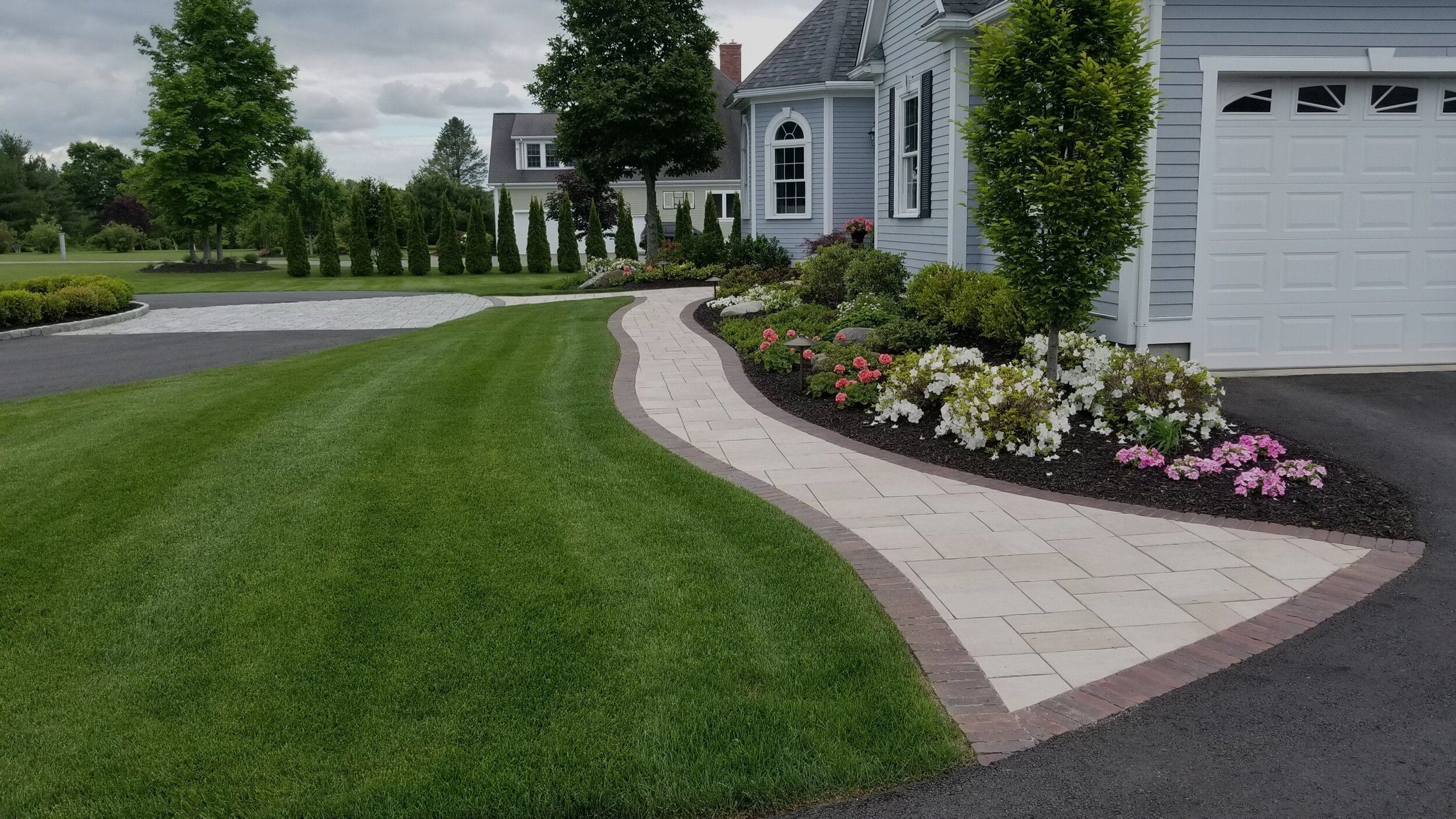Why Choosing the Right Palm Desert Landscaping Solution Matters
Why Choosing the Right Palm Desert Landscaping Solution Matters
Blog Article
A Comprehensive Overview to Designing and Implementing Effective Landscape Design Solutions
The art and science of landscaping extend beyond plain visual appeals; they involve a thoughtful integration of design concepts, environmental stewardship, and sensible execution. What methods can one employ to ensure these landscapes not just prosper yet likewise grow in consistency with their surroundings?

Recognizing Landscape Style Concepts
One may question what fundamental components contribute to effective landscape layout. At its core, successful landscape style pivots on several essential concepts that assist the arrangement and choice of components within a space. These principles include unity, equilibrium, rhythm, and percentage, each serving to produce an unified exterior atmosphere.
Unity describes the cohesive partnership among various components, ensuring that they collaborate cosmetically and functionally. Equilibrium can be achieved through balanced or unbalanced setups, permitting the landscape to feel secure and welcoming. Percentage entails understanding the range of elements in connection with each various other and the surrounding atmosphere, advertising aesthetic consistency and convenience.

Examining Your Outdoor Room
Before applying the principles of landscape design, an extensive assessment of your outside area is important. This first analysis helps define the extent of your landscaping project and makes certain that your design aligns with the one-of-a-kind features of your building. Begin by examining the dimensions of your space, taking precise measurements to understand the offered location for numerous aspects such as patio areas, paths, and gardens.
Following, observe the existing attributes of your landscape, consisting of topography, dirt quality, and water drainage patterns. These variables dramatically affect plant selection and placement. Additionally, evaluate the sunlight exposure across various areas throughout the day, as this will certainly affect the sorts of plants that flourish in your yard.
Take into consideration the microclimates created by structures, trees, and various other obstacles, as they can influence temperature level and wetness degrees. Take note of any kind of existing plants or hardscape components that you want to retain or eliminate. This detailed examination prepares for a effective and well-informed landscape design solution, making sure that your style is not only aesthetically pleasing however likewise useful and sustainable for years to find.
Sustainable Landscape Design Strategies
These techniques not only advertise eco-friendly equilibrium but also improve the useful and visual value of a landscape. Implementing reliable irrigation systems, such as drip watering, lessens water waste and guarantees that plants get sufficient moisture (Palm Desert Landscaping).

An additional effective method is the strategic placement of trees and shrubs to give natural windbreaks and color, hence reducing power expenses (Palm Desert Landscaping). Rain gardens can be incorporated into the landscape style to handle stormwater runoff efficiently, filtering toxins prior to they go into waterways
Selecting the Right Plants
Selecting the right plants for your landscape is essential to accomplishing both aesthetic appeal and environmental consistency. The procedure starts with an understanding of your local climate, soil conditions, and the specific microenvironments within your landscape. Examining elements such as sunshine direct exposure, moisture levels, and existing flora will certainly assist you select plants that prosper in your one-of-a-kind setting.
Take into consideration including indigenous plants, as they are well-adapted to neighborhood problems, require less maintenance, and assistance neighborhood wildlife. Furthermore, choosing a varied array of species can boost biodiversity while reducing the threat of illness and insect outbreaks. It is important to assess the growth practices, blooming periods, and seasonal shades of possible plants to create a vibrant and cohesive landscape.
In addition, consider the intended use the space; for circumstances, if the area will experience high foot web traffic, choose resilient ground covers. By thoughtfully picking plants that great post to read align with both your environmental demands and visual goals, you can create a sustainable landscape that not only boosts your residential or commercial property but also adds favorably to the surrounding environment.

Application and Upkeep Approaches
Once the ideal plants have been chosen for your landscape, the check out this site emphasis shifts to reliable implementation and recurring upkeep approaches. Effective installment begins with appropriate site prep work, that includes dirt screening to figure out nutrient levels and pH, adhered to by changing the soil as needed. Carefully arrange plants according to their development behaviors and light requirements, making certain ample spacing to promote healthy and balanced growth.
Irrigation is a vital aspect of execution. Develop a watering schedule that considers the details demands of each plant varieties, changing for seasonal changes. Utilizing drip watering systems can enhance water effectiveness and reduce runoff.
Maintenance techniques must be applied to guarantee the longevity and vitality of your landscape. Routine jobs include weeding, mulching, and pruning to manage development and avoid condition. Fertilization ought to be performed based on dirt examinations, giving the essential nutrients without over-fertilizing.
Keeping track of for parasites and diseases is necessary; early detection can avoid considerable damage. Seasonal changes to maintenance routines, such as winterizing perennials and preparing for spring development, will guarantee that your landscape stays healthy and visually appealing year-round.
Final Thought
Effective execution and recurring upkeep even more ensure the long life and vitality of landscapes. By incorporating these elements, landscapes can be changed into attractive, functional settings that advertise biodiversity and contribute favorably to area health.
One might question what foundational components add to efficient landscape design. At its core, effective read here landscape layout pivots on a number of crucial principles that lead the setup and choice of aspects within a space.Picking the right plants for your landscape is essential to attaining both aesthetic appeal and eco-friendly consistency. It is crucial to review the growth routines, flowering periods, and seasonal colors of potential plants to develop a dynamic and natural landscape.
Once the appropriate plants have been chosen for your landscape, the focus shifts to efficient implementation and recurring upkeep approaches.
Report this page